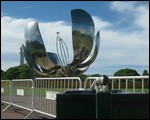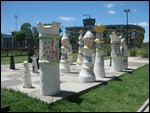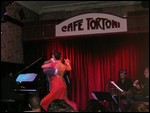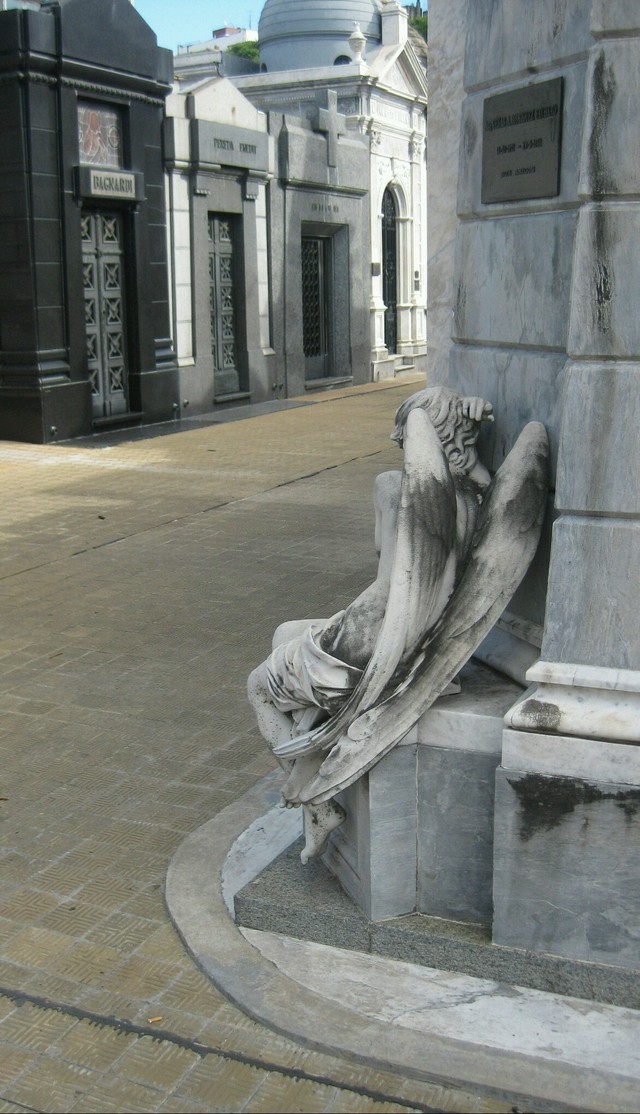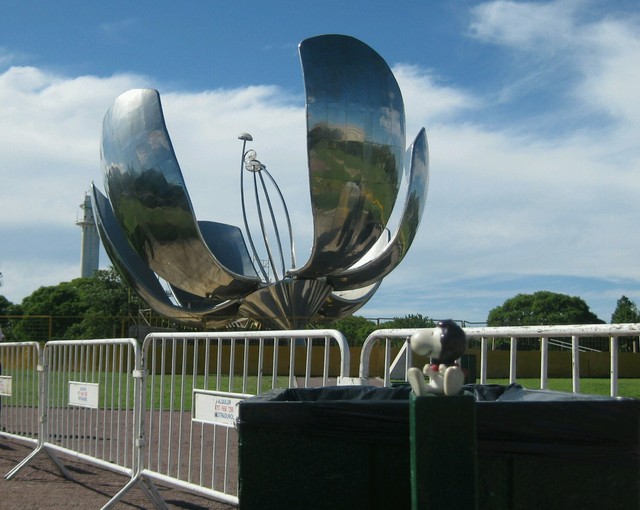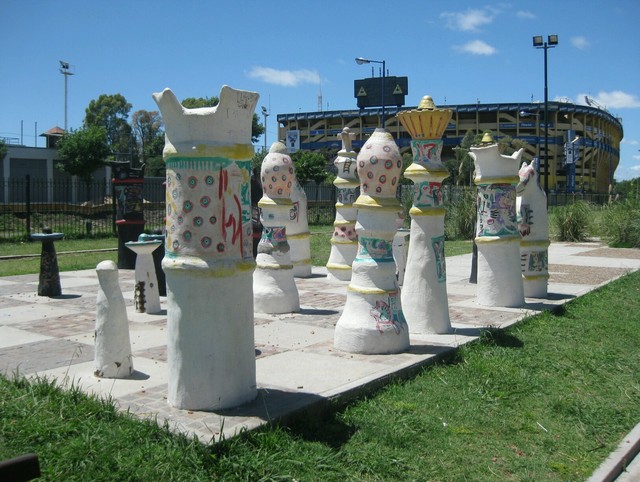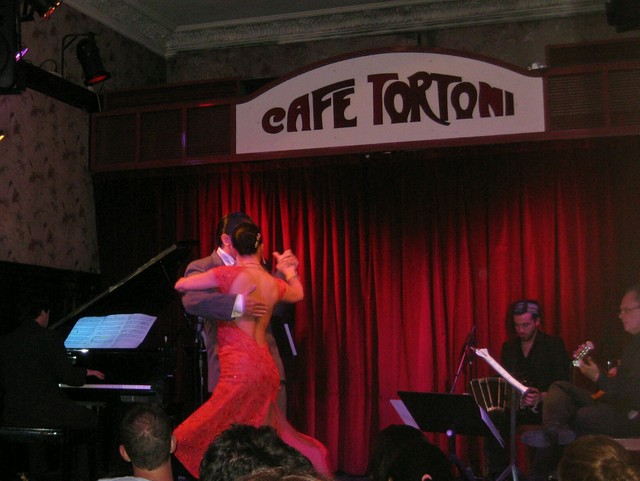After a few days in rural Argentina, it was high time to get more urban-like, and as such, the university town of Cordoba, Argentina's second largest, became our first destination in search of culture and concrete.
Sophie is highly into art; however, her husband is not, and so I met up with her at Museo de Bellas Artes Evita Palacio Ferreyra to check out mostly contemporary and fully Argentinian art. Some fine work, overall, but the most striking was the Carlos Alonso exhibition. His paintings depict horrific abuse of women and abduction of children, presented in a disturbing and vivid style. The pieces were made during the years 1976 and 1983 and are therefore a protest and presentation of what atrocities the military regime of that period committed.
A stone throw away from Evita Palacio Ferreyra is Museo Emilia Caraffa. Upon arrival it was closed, though. A sign informed us it would open at eight, and with a special event, as it were: The 100:th anniversary of the museum. Awaiting the grand opening, we enjoyed som nice malbecs and torronteses at a nearby bistro. The grand opening draw in the crowd, but not overly so. Free champagne and sushi mixed with the art and a select few artists, and the beret I purchased at the estancia made me fit in perfectly.
The first leg of the tour was coming to an end, and a farewell dinner in a very golden-era-of-hollywood-themed restaurant was held, for those who where to leave in Buenos Aires. After dinner, a few of us went to a nearby nightclub, and after midnight, birthday boy Russ brought out the bubblies. Music was pumping, masses of people were raising the roof, and although I don't dance (I never dance), two Chilean girls convinced me to abandon my principles, just for one night.
Free walking tours are, as ever so often, a good way to be introduced to a city. Tour guide Christina took me and a reasonably smallish group around BA:s city centre, showing Casa Rosada, Café Tortoni, the obelisk, Las Madres and so on. And all over the widest avenue in the world, 9 de Julio, supporters of the president gathered to celebrate the 31:st anniversary of democracy in Argentina. The celebrations would last well into the night, with drums and firecrackers. It was soon time for another pre-dep meeting though, with a successive dinner. Afterwards, fernet cola and rubios was had as I struck up a conversation with some locals, thus practising my Argentinean. Los Malvinas son Argentinas was a phrase often repeated by Ellena, and the barkeep gave me a free beer, on account of us being 'tocayos', an Argentinian term meaning two people sharing the same name.
Exploring BA is doable on foot, and with my gps-watch and my trainers I set off towards La Boca, tracking my route. The massive La Bombanera, the football stadium used by Boca Juniors, dominates the northernmost area with its blue-and-yellowness. The colours are found all over the surrounding blocks, and hint about what's to come. The rest of La Boca, especially Caminito, is extremely colourful, literally. Here the blue and yellow is accompanied by reds, greens, puples, all shades of the rainbow.
To get to La Boca from the city centre however, one has to pass the cobbled streets of San Telmo. On Sundays that trot takes considerably more time, since market stalls cover the narrow walkways. Flea markets and arts and crafts dominate the scene, and the recurring themes for home made trinkets seem to be football, Evita, Mafalda and tango.
Heading north, I aimed for two of the possibly most well-known landmarks of BA: Floralis Genérica and Recoleta Cemetary. The mausoleum-massive graveyard is also known as La Ciudad des Mortes, City of the dead, and has some very elaborate final resting places, the most famous of which is, of course, that of Eva Peron. It's tricky to find, though, as she's listed under her maiden name. Of course, once you make your way through the maze (or possibly labyrinth) of graves and find a huge crowd in front of one random tomb, that'll be where Evita sleeps.
That night, local team Racing Club de Avellaneda played Godoy Cruz for the championships. Naturally, tickets were impossible to get, but after Racing's victory the streets were filled with happy fans waving the blue-and-white banners and wearing their blue-and-white jerseys. The celebrations would last well into the night, with drums and firecrackers.
As tickets where unavailble and football also can be seen in Brazil, I instead opted to see a tango show. At classic Café Tortoni, the minstrels played up, out came an older lady with an impressive and deep singing voice. Eventually the dancers came on stage, tangoing away. However, the performance was quite tepid, and if I pay to see a tango show I expect there to be tango at least 3 songs out of 4. At Tortoni, the ratio was 1/4, and as such, I discourage going. Try any of the hundreds of Milongas shattered all over town (especially in La Boca) instead.
With the constant humming of the AC drowning out the intermittant bangs of drums and firecrackers, I had a good night's sleep in Buenos Aires before hitting the road up north, Brazilian way.
To summarize: I practised my art guesswork in museums in Cordoba, my dancemoves in clubs in BA and my language skills in pubs in Baires.
Fun factoid: It is well-known, to those who know it well, that the reason for the colours of Boca Juniors is due to the fact that the team sent a man down to the harbour to see what flag the first ship hoisted. It was Swedish, and hence the yellow and blue. Rumour has it that he first passed ships from Poland, Indonesia, Austria, Monaco and Peru before finding the Swedish one, but that would have been mightily confusing as Boca Juniors' main rivals, River Plate, sports white and red.
.

